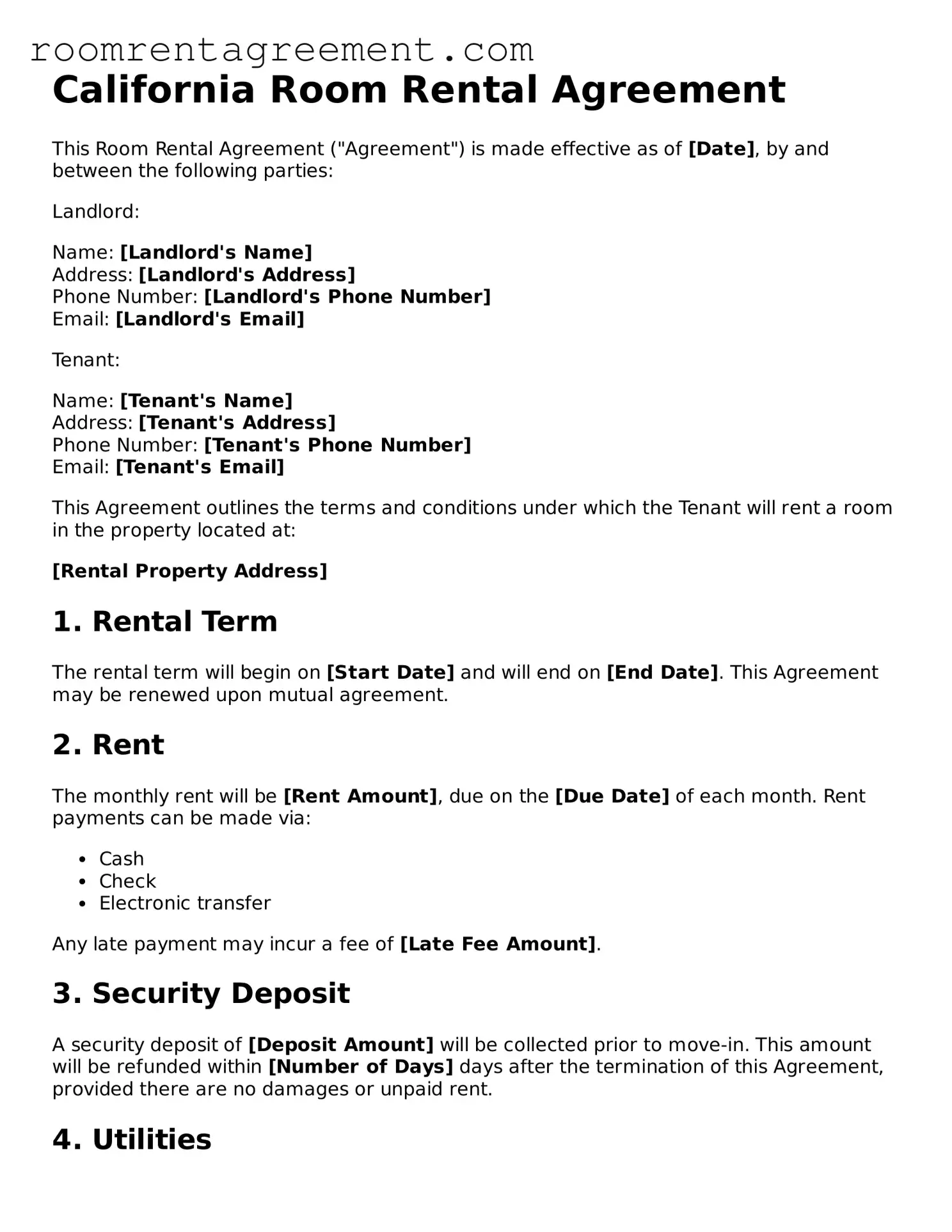More About California Room Rental Agreement
-
What is a California Room Rental Agreement?
A California Room Rental Agreement is a legal document that outlines the terms and conditions between a landlord and a tenant for renting a room within a residential property. This agreement specifies the rights and responsibilities of both parties, including rent amount, payment due dates, security deposits, and rules regarding the use of common areas.
-
Who should use this agreement?
This agreement is suitable for landlords renting out individual rooms in a shared living situation, such as a house or apartment. It is also beneficial for tenants seeking to understand their rights and obligations when renting a room. Both parties should carefully review the agreement to ensure it meets their needs.
-
What key terms should be included in the agreement?
Essential terms to include are:
- Names and contact information of the landlord and tenant
- Description of the rental property and the specific room being rented
- Rent amount and payment schedule
- Security deposit details
- Duration of the rental period
- Rules regarding common areas and utilities
- Termination conditions and notice periods
-
How is the rent amount determined?
The rent amount is typically based on various factors, including the location of the property, the size and amenities of the room, and the rental market in the area. Landlords may also consider the costs of utilities and maintenance when setting the rent. It is advisable for both parties to agree on a fair rent amount that reflects the value of the room.
-
Can the rental agreement be modified after signing?
Yes, the rental agreement can be modified, but any changes must be agreed upon by both the landlord and the tenant. It is important to document any modifications in writing and have both parties sign the amended agreement to ensure clarity and avoid future disputes.
-
What happens if the tenant fails to pay rent on time?
If the tenant fails to pay rent on time, the landlord may initiate late fees as specified in the agreement. Depending on the terms outlined, the landlord may also have the right to issue a notice to the tenant for non-payment. Continued non-payment can lead to eviction proceedings, so it is crucial for tenants to communicate with their landlords if they encounter financial difficulties.
-
Are there any specific laws governing room rentals in California?
Yes, California has specific laws that govern residential rentals, including room rentals. These laws cover issues such as security deposits, eviction procedures, and tenant rights. It is important for both landlords and tenants to familiarize themselves with these laws to ensure compliance and protect their interests.
-
What should a tenant do if they have a dispute with their landlord?
If a tenant has a dispute with their landlord, they should first try to resolve the issue through direct communication. If that does not work, tenants can seek mediation services or consult legal resources for guidance. In some cases, legal action may be necessary, but it is often best to explore all other options first.
